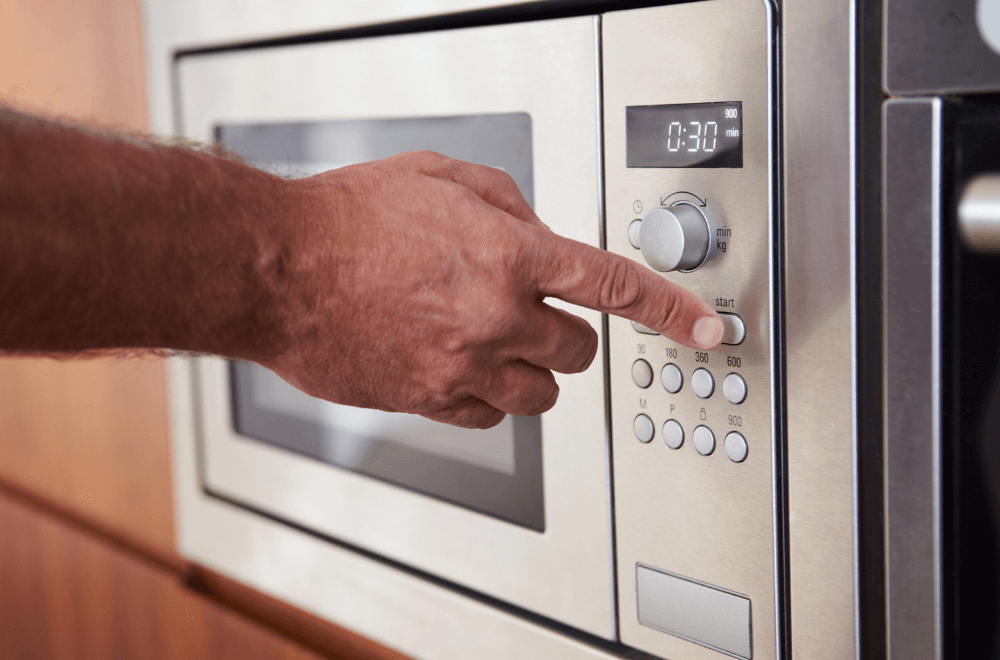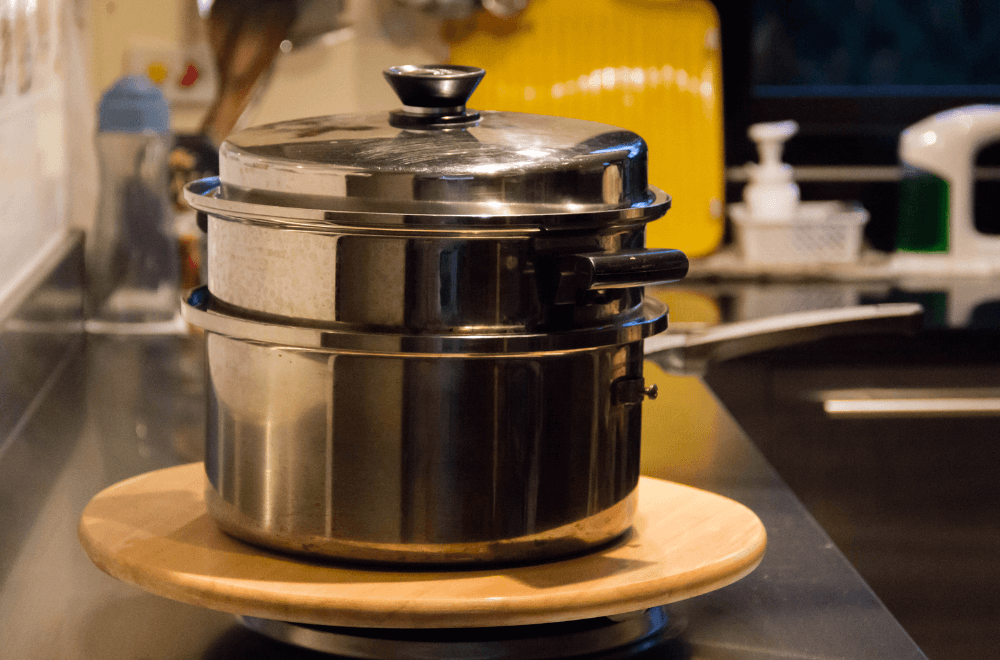It’s time to debunk the myth behind the timeless debate: “Can or should you microwave milk for coffee?” Dig into this article for all the helpful answers.

Not everyone has a coffee machine, so can or should you microwave milk for coffee? Some say they don’t like to microwave the milk for coffee drinks as they can’t get the desired sweetness and texture as they would with a steam wand. However, if you do it right, a microwave can go a long way to bring you a beautiful latte or cappuccino.
Here, I’ll walk you through the benefits of microwaving milk for coffee and how to do it correctly. It’s a good companion guide to our article about microwaving coffee.
Heating Milk Makes A Better Cup Of Coffee
Heating milk allows the sugar content to break down and bring out a sweeter taste, balancing the bitter edge of coffee. Room-temperature milk also does the trick. However, the ideal temperature to achieve sweet and silky milk is between 140°F (60°C) to 158°F (70°C).
Microwaving milk is one of the best ways to tell if your milk has gone bad before using it for your coffee. If it becomes lumpy or gooey only after one minute in the microwave, it’s time to discard it for a new bottle.
Is It Safe To Microwave Milk?
It’s safe to microwave milk. The trick here is to keep a close eye on your timer to ensure it won’t burn. The time and power level to heat your milk depends on your microwave’s power.
On the first attempt, you may be confronted with a few issues. Your milk might scorch the bottom of the container or curdle and form a film layer on the surface. However, these issues are likely to happen regardless of which heating method you use. Microwaving milk also doesn’t seem to change its nutritional profile.
Benefits Of Microwaving Milk For Coffee
Microwaving milk is fast and convenient. Heating milk in a microwave doesn’t require you to stand by the stovetop and keep stirring the whole time.
Other than that, it makes cleaning easier. All you need to clean is the mug and a spoon – no saucepan gets in the way. You might also be wondering can you make instant coffee with milk.
How To Microwave Milk For Coffee Properly
There are very few steps to microwaving milk for coffee. Set the timer correctly and use a thermometer the first time. Test and see if the flavor from the first attempt pleases your palate. If you’re happy with the result, repeat it every morning.

Fill a microwave-safe coffee mug with milk. The mug should be big enough to accommodate the expansion when the milk is heated. If you want to froth it after microwaving, the level of milk should not exceed half the cup. If you’re unsure how big the container should be, the rule of thumb here is to opt for a container that can find double the amount of milk you’re using.
Set the power on medium-high and use ten seconds intervals to stir it until it’s reached the ideal temperature. The flavor of your milk responds differently to different types of microwaves. So keep trying until you find your sweet spot.
Milk Curdles When Microwaved – A Troubleshooting Guide
One of the most common problems with microwaving milk is when the protein molecules on the surface start to coagulate. Most of the time, it has something to do with the temperature and power of your microwave.
If you set the timer too high for a very short period, your milk doesn’t have enough time to be heated evenly. Rapid boiling causes the casein in the milk to clump together, which curdles the milk.
Let your milk relax. Keep it going over low heat for longer until you see the steam escaping from the milk. Stirring is the key factor in preventing the milk from scorching at the bottom or forming sugars and proteins at the surface. It also distributes the heat and hotspots more evenly.
How To Make Froth Milk In The Microwave At Home
Expensive lattes and cappuccinos may eat up your monthly budget if you drink them day after day. So it’s time to make your own at home. No advanced equipment is needed; only a microwave and a Mason jar will work. Note that this approach works for both dairy milk and plant-based milk.
- Pour half a cup of milk into the Mason jar. This should only fill the Mason jar halfway. Cover it tightly with a lid and keep shaking for twenty seconds until a layer of bubbles forms on top.
- Take off the lid and place the jar of milk into the microwave; set it on medium-high heat for sixty seconds, take it out, and pour it right into the coffee.
Alternatively, you can also do it backward by microwaving it first and shaking it afterward. Comparing the two methods, I found out that the milk foams much faster after it’s microwaved. Feel free to play around to find a method that works for you; either way, you’re saving money compared to investing in an espresso machine or going to a café.
3 Alternatives To Microwaving Milk
Using a microwave is the easiest way to heat milk, but you can check out three other alternatives below if you don’t have a microwave at home or in case, it stops working. Check out our guide on common espresso with milk drinks.
1. Use A Deep Pot On A Stovetop
The easiest option is boiling the milk directly inside a large, deep pot over medium heat. The secret behind using a deep pot is to make space for the milk to create bubbles that appear up along the edge. Since the milk interacts with the heat directly, make sure you keep your eyes on it at all times until the steam rises.
2. Use A Double Boiler
A double boiler is a saucepan with a detachable upper compartment heated by boiling water in the lower one. Place a pot that contains boiling water over medium heat, then put another pot on top. Pour the milk in and keep stirring to make sure the milk doesn’t burn at the bottom. Turn off the heat and take it off the stovetop when you see bubbles forming around the edge, and the milk starts steaming.

3. Shake A Heated Mason Jar Of Milk
The last option you can consider is to put the milk in a jam jar or a Mason jar – these must be made from heat-resistant glass. Place the jar inside simmering water for at least one minute, take it out, secure the lid and shake gently. Shake more vigorously if you want a nicer foamy layer on top of your coffee. This method makes a beautiful, yummy latte to help you recharge.
You can keep your milk going for a few more minutes, depending on how cold your milk is. Make sure the jar is not too hot so as not to burn your hands. Feel free to wrap a towel or kitchen paper around the jar to prevent burns.
